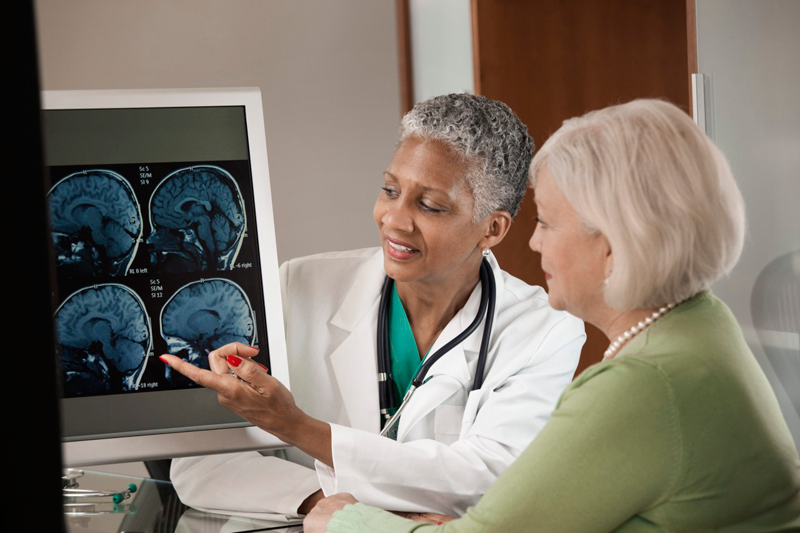Hope for Recovery from Serious Stroke Disability

With intensive therapy, stroke survivors with disability a year or more after completing standard care can recover motor function and regain use of a limb.
Every year, more than 800,000 Americans suffer a stroke. It happens when a blood clot suddenly blocks blood to the brain, causing an ischemic stroke, or a blood vessel bursts, resulting in a hemorrhagic stroke that spills blood into or around the brain. Stroke is a leading cause of death in the U.S. and results in more serious long-term disabilities than any other condition, according to the Centers for Disease Control and Prevention.
Although stroke impacts the brain, the effects can affect the entire body. In addition to sometimes resulting in problems understanding or forming speech, stroke often leaves survivors with weakness or even complete paralysis on one side of their body, a condition known as hemiplegia. Thankfully, the brain and body can start to recover, and post-stroke rehabilitation helps many overcome disability following a stroke.
YOU MIGHT ALSO LIKE: Risk Factors for Stroke
Significant improvement from a stroke-caused physical problem usually occurs only — if it is going to — within about six months after a stroke. But University of Florida (UF) researchers have found that timetable isn’t necessarily set in stone.
Stroke survivors with persistent disability a year or more after completing standard care can recover motor function and regain use of a limb, according to a UF study. The key isn’t surgery or a new medication. It’s an intensive physical therapy program.
“Often after stroke, people can recover normal function without intensive treatment, in response to normal protective physiological processes,” said UF neurology professor Janis Daly, PhD, who headed the research. “Some people recover quite well and can function normally. For this study, however, we enrolled people who had a stroke a year or more prior to their study participation, and who were still severely impaired.”
When normal pathways between brain cells are damaged by a stroke, moving limbs normally to perform many daily activities can be difficult. Imagine, for example, concentrating on reaching out to pick up a cup of coffee but having your arm flex inward toward your body instead of extending out toward the cup. In all, 39 research subjects with similar limb disabilities participated in the UF study.
To see if stroke survivors who had not regained normal movements of their shoulders, arms, and hands could improve, Daly and her colleagues tested three forms of intensive physical therapy involving five hours of rehabilitation a day, five days per week, for 12 weeks.
The study volunteers received several hours of daily motor learning rehabilitation, which involved concentrating on attempting specific movements as deliberately and normally as possible, over and over again. This type of rehab, Daly explained, is similar to learning a new tennis serve or other sport movement.
“Think about a child learning to walk or to ride a bicycle,” said Daly, who is director of the Veterans Affairs Brain Rehabilitation Research Center in Gainesville, Fla. “They must practice over and over until they come close to perfection.”
Electrical stimulation rehabilitation and robotics-assisted rehabilitation were also used in the study. A group of research volunteers received electrical stimulation rehabilitation via electrodes that comfortably stimulated forearm muscles repeatedly, triggering hands to lift. Another robotics-assisted rehabilitation group practiced a reaching movement as robot software guided them to hit targets shown on a computer monitor. The forearms and hands of these research subjects were held still in a support so the volunteers could concentrate on moving their shoulders and elbows.
One group of study volunteers received the motor learning rehabilitation for five hours daily. The other two groups worked with motor learning for 3.5 hours, then received either electrical stimulation or robotics-assisted rehabilitation for the remaining 1.5 hours per day.
While the number of participants in the study was small, the research showed consistent and hopeful results. All three groups improved dramatically. In fact, on average the research subjects doubled or nearly tripled their coordination. Those who had been severely affected by strokes showed significant improvements in their ability to move their arms and perform complex tasks they couldn’t do before the intense rehab. One study participant who had been unable to lift even a spoon can now feed himself.
“The magnitude of recovery we observed in our study is higher than any other studies that have been published so far, which supports the promise of longer treatment and more intensive treatment after stroke, even for those who are more severely impaired,” Daly said.
The National Institute of Neurological Disorders and Stroke “Know Stroke” campaign offers information on preventing, recognizing, and treating stroke.
Updated:
January 12, 2023
Reviewed By:
Janet O'Dell, RN